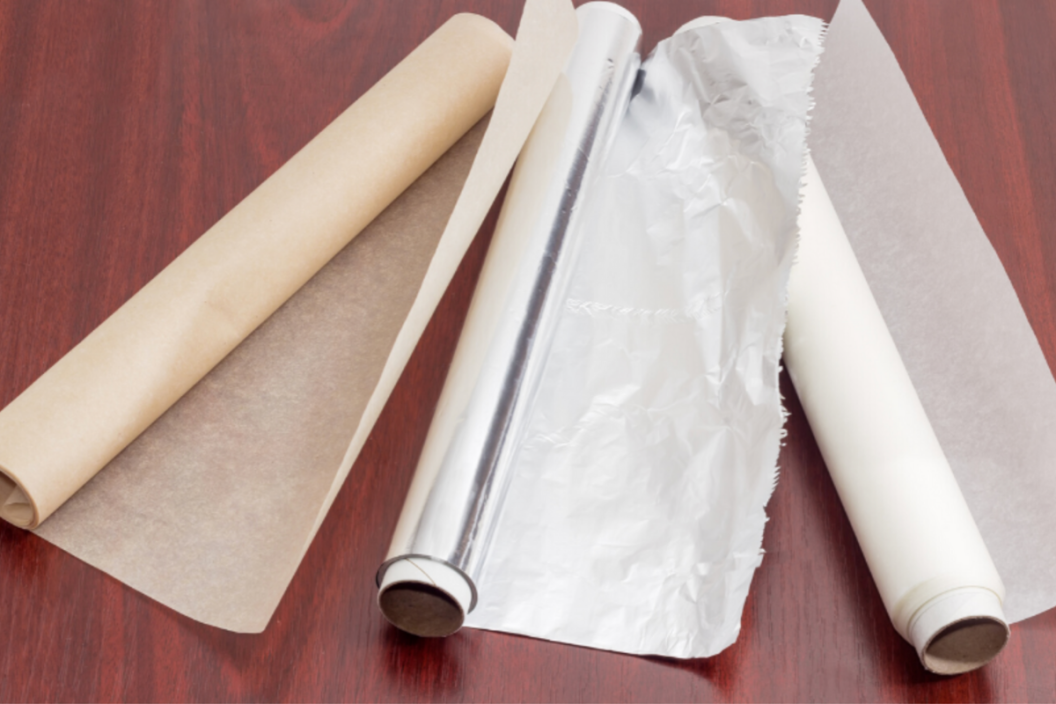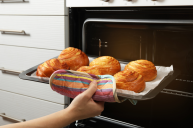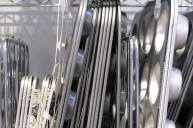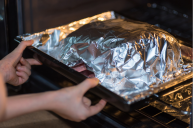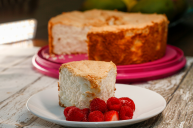When you're baking cookies or roasting vegetables, do you tend to grab parchment paper or aluminum foil? When it's time to wrap up those sea salt caramels you made as a gift, do you grab wax paper or parchment paper? Every home cook has their way of working in a kitchen, but many of us don't know the actual differences between wax paper, parchment paper, plastic wrap, and aluminum foil. What's the difference between wax paper vs parchment paper? Consider this your go-to guide for decoding the common cooking papers.
Videos by Wide Open Country
How do you know when you're using the right baking paper? We put together a few key uses for each baking paper that we swear by in our own kitchens.
Wax Paper
Wax paper, or waxed paper, is made moisture-proof through the application of wax. Usually paraffin wax or soybean wax, this thin wax coating creates a nonstick surface on each side of the paper. You should never place wax paper in the oven because it is not heat-resistant. It should be reserved for cold storage items, never hot. You can pick it up at any supermarket or grocery store.
Here are the best uses for wax paper.
- Use in place of plastic wrap when microwaving food to prevent splatters. Plastic wrap will melt at higher temperatures, while the melting point for wax papers is much higher.
- Cover your countertop before measuring dry ingredients, especially for baking. You can use it to funnel the excess flour, sugar, and more back into your storage jars or bags. You can even use it afterward to line your cake pan.
- Cover your work surface and flour it to roll out pie crusts or knead bread dough.
- Wrap sticky candies or individual portions of cold desserts, like fudge, toffee, or caramels
Parchment Paper
When it comes to parchment paper vs wax paper, one difference is that parchment paper is made for the heat and is covered in a silicone coating that creates a nonstick surface. A moisture-resistant and grease-resistant paper that is treated for oven use, parchment paper is more versatile than wax paper because it was made for heat. It's typically brown or white, depending on the brand.
You can often find pre-cut sheets on Amazon to line baking sheets without the struggle of cutting the perfect size. Here are the best uses for parchment paper.
- Cover sheet pans to prevent food from sticking in the oven, from chicken legs to roasted asparagus.
- Line cake pans, muffin pans, and other baking pans with small sheets of parchment to prevent baked goods from sticking. Use a small dab of butter on each corner to prevent the edges from curling as you're working.
- Sift ingredients onto parchment paper and create a funnel to reuse the excess.
Plastic Wrap
Plastic wrap, also known as cling wrap, shrink wrap, and Saran wrap, allow oxygen and water moisture to permeate, which can extend the freshness of veggies and produce. Plastic wrap can be microwaved, but it's best for quick refrigeration and storage.
Here are a few unique ways to use plastic wrap around the house for more than wrapping food.
- Prevent the quick ripening of bananas by wrapping the ends in plastic wrap.
- Place a layer of plastic wrap over ice cream before putting the lid back on to prevent freezer burn.
- Preserve paint cans by placing plastic wrap over the paint before sealing the lid.
- Make a DIY fruit fly trap to stop the pesky bugs.
Aluminum Foil
Aluminum foil, you guessed it, is aluminum pressed into thin metal leaves. Where wax paper is good for preventing sticking, aluminum foil is designed for insulating. You can reuse foil as often as you wish, except when it touches raw meat or other food items that carry bacteria, unlike wax paper. When using nonstick foil, remember to place the shiny side out and the dull side facing the food.
Never put foil in the microwave because the concentrated direct heat and high temperatures can cause it to combust.
- Use foil in a cookie sheet or baking pan as pan liners to cut down on added grease and butter.
- Use foil when roasting chicken or turkey in the oven, and for the grill as a foil packet.
- Use foil in a baking pan when baking brownies to form the shape of the pan and simply lift out your dessert to cool.
- Wrap sandwiches, meat for short-term storage, and cover dishes to hold in heat.
- Form necessary shapes in the kitchen, like funnels, to prevent messes.
